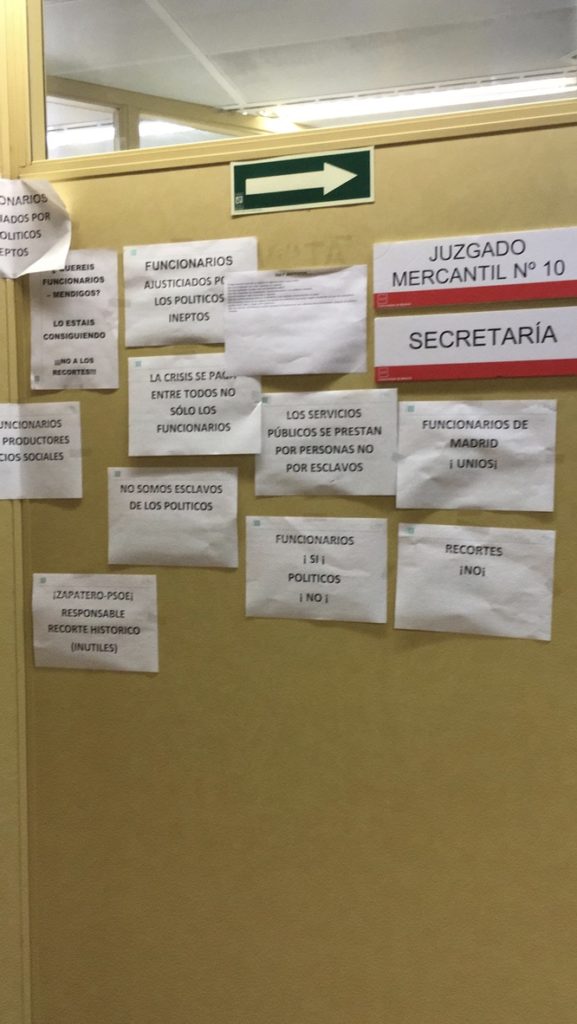
09.06.2020
Bankruptcy procedure of natural persons
 Por
Claramunt Julián, Leticia
Por
Claramunt Julián, Leticia In the first quarter of 2016, 1,171 bankruptcy procedures were declared in Spain, of which 941 corresponded to legal persons and 191 to natural persons.
Of the bankruptcy procedures filed by natural persons, only 45 were filed by businesspeople. It should be remembered that from July 2015, businesspeople who are natural persons must apply for bankruptcy at the Commercial Courts, while natural persons who are not businesspeople must apply at the Courts of First Instance.
The key to judicial competence lies in the determination of the concept of businessperson, and the law does not include any type of definition of what is to be understood by a businessperson for these purposes.
It is therefore necessary to resort to other rules. And in this way, it is possible to place this figure in the competent bankruptcy area.
Contacto No te quedes con la duda, contacta con nosotros. Estaremos encantados de atenderte y ofrecerte soluciones.The Bankruptcy Law
A first approximation to the definition of a businessperson can be found in the Bankruptcy Law which establishes that business people are those who have said condition in accordance with commercial legislation, as well as those who carry out professional activities, have said condition for the purposes of social security legislation and self-employed workers.
Without prejudice to what has been stated in the previous paragraph, the reference to the concept of businessperson in the Bankruptcy Law is confusing. In the first place because it is framed in a specific section of the law, and refers to all those persons who can apply for an “Out-of-court settlement of payments”. Secondly, because we would not be dealing with a definition of the concept of businessperson that could be used in other aspects of the regulations contained in the Bankruptcy Law, that is to say, it would not be a general definition of a businessperson.
The Code of Commerce
If we go to the definition that the Code of Commerce offers in relation to businessperson, it refers to the merchant, but the merchant is still a type of businessperson. So the definition would still be incomplete.
On the other hand, the law on support for entrepreneurs included the concept of “entrepreneur”, a concept that could indirectly define businesspeople, indicating that those persons, regardless of their status as natural or legal persons, who carry out a business or professional economic activity are considered as such.
Based on the above, and on doctrinal considerations, it seems reasonable to understand that the “business natural person” is that person who develops in his own name a business or professional economic activity.

Si te ha interesado este artículo no dudes en leer:
What do you need to know before you enter a Bankruptcy Procedure?
The temporal moment
Another relevant question, in order to be able to apply the competence that corresponds to the bankruptcy procedures of natural persons, is the determination of the temporary moment in which the conditions to be considered as a businessperson concur.
Under this precept, it has been considered that the characteristics of the debt of the natural person must be taken into account. In other words, to determine whether the debt for which the person is in need of applying for bankruptcy procedure has been originated by the development of a business activity or not.
This change in jurisdiction could generate doubts in the processing of the procedure based on two premises (i) the Commercial Courts have a specialization in bankruptcy matters that the Courts of First Instance do not have up to this date and (ii) what will happen with the accumulated or joint application for bankruptcy procedure?
Where is the necessary specialization in bankruptcy matters?
(i) The Commercial Courts, despite the backlog they have accumulated during this period of crisis, are Courts with special qualifications in the field, prepared to issue quality rulings in a field with a certain technical complexity, composed of judges who have specific and in-depth knowledge of the subject.
The Courts of First Instance do not have this specialization and despite the fact that a distinction is made between businesspeople and non-business people, the bankruptcy procedures are governed by the same law. Bankruptcy Law, which is complex and has undergone innumerable reforms in recent years.
What about the accumulation?
(ii) The bankruptcy law provides for the possibility of joint applications for bankruptcy procedure by several debtors, or to request accumulation in already declared bankruptcies. The advantage of the joint application or accumulation is none other than the coordinated processing, with better procedural efficiency and protection of the interests of the creditors.
Where all the debtors have the status of businesspeople or where none of them have the status of businesspeople, there does not appear to be any problem with joint applications and proceedings. However, where some debtors are businesspeople and others are not, and the two are related, it does not seem that the rules of aggregation and/or joint processing can be applied, as long as no rule of connection has been defined to provide a solution in this area. Therefore, each bankruptcy procedure will be processed before the competent court separately.
If you want to know more about bankruptcy procedures we suggest the following article:












